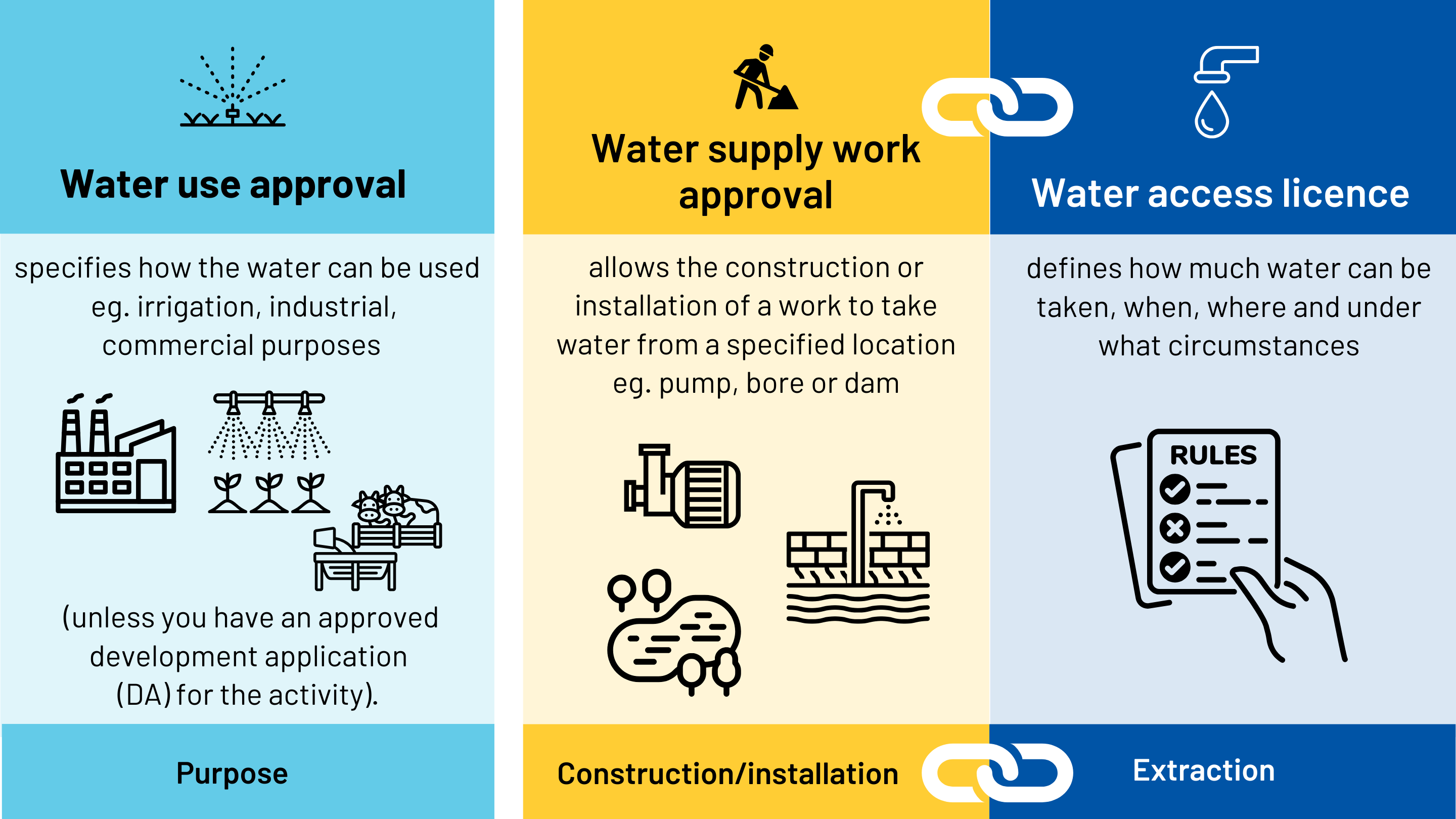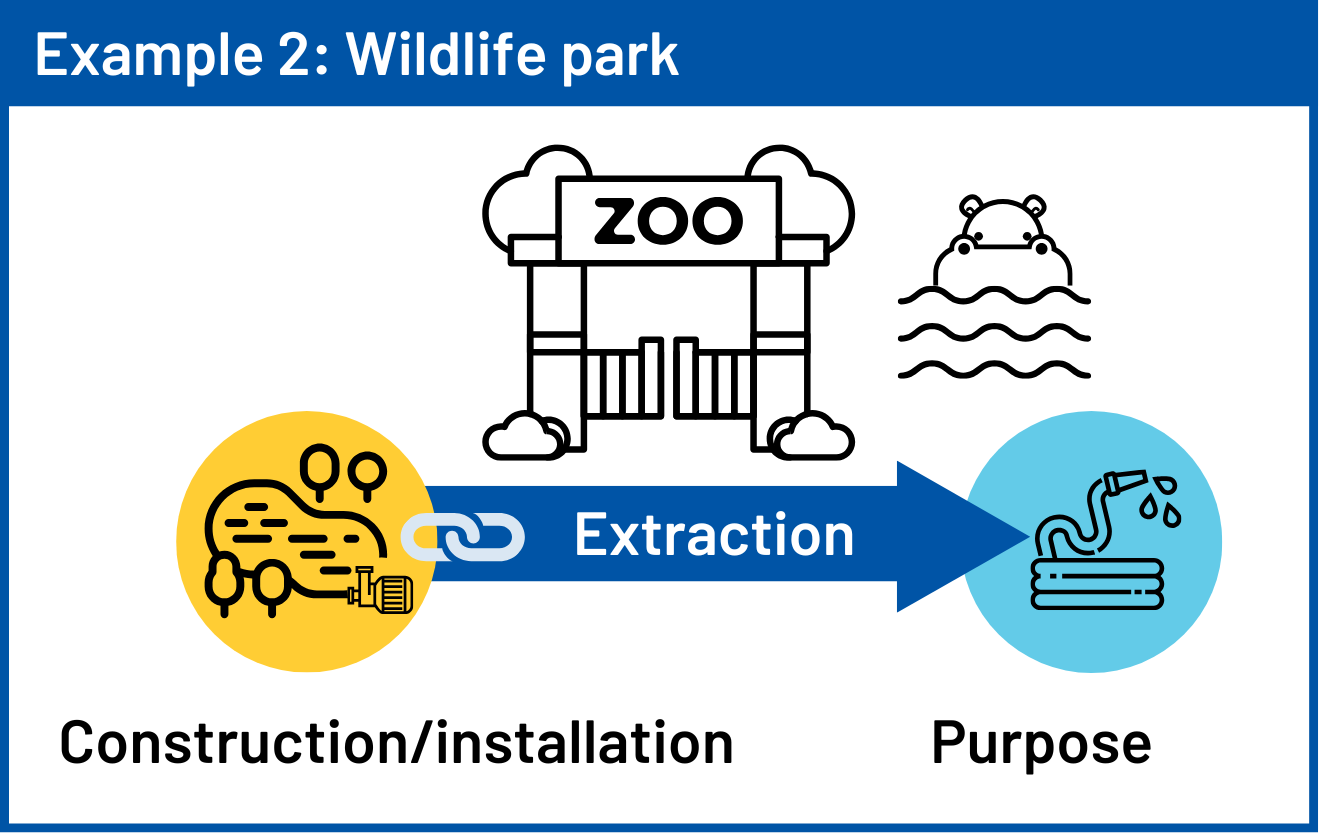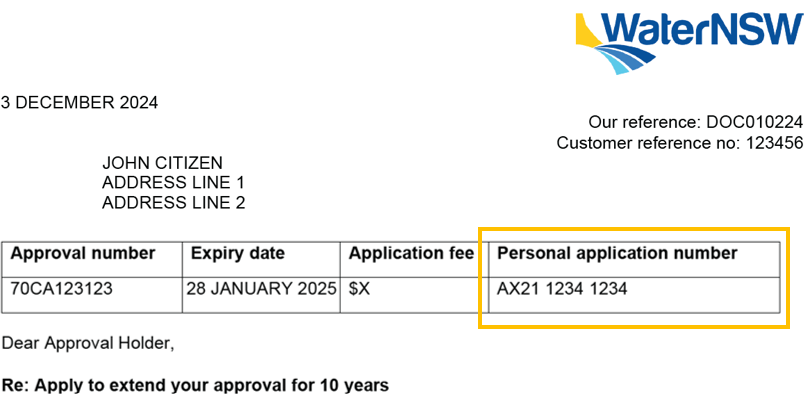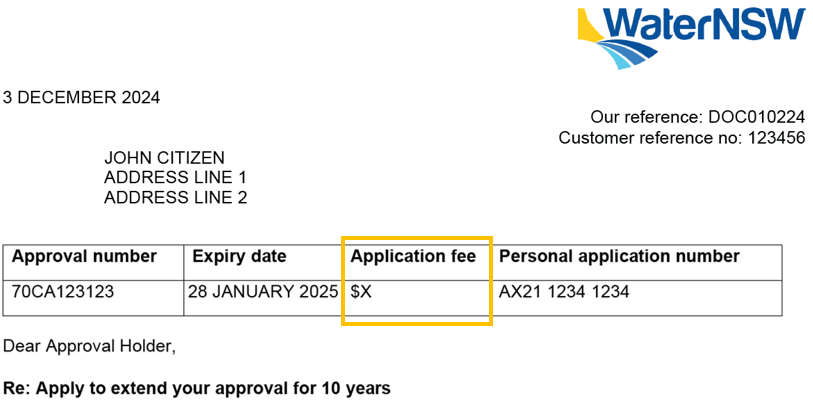Water supply works and water use approvals
Access the information and resources you need to understand water supply work and water use approvals.
Report a hazard - phone: 1800 061 069
WaterNSW head office
1PSQ, Level 14, 169 Macquarie Street Parramatta, NSW 2150
Contact us:
P: 1300 662 077
E: enquiries@waternsw.com.au
Postal address
WaterNSW
PO Box 398, Parramatta, NSW 2124
Locations and appointments
View offices or make a booking >
Warragamba Dam visitor centre
P: 02 4774 4433
Need an interpreter?
需要口譯員嗎?
Cần một thông dịch viên?
Necesitas un intérprete?
Hai bisogno di un interprete?
 Customers are encouraged to book an appointment with us to discuss water licensing enquiries.
Customers are encouraged to book an appointment with us to discuss water licensing enquiries.
Book a phone appointment
Select your enquiry category below and use our online facility to book a phone appointment. Phone appointments are available Monday to Thursday.
Please note that this service is in relation to approval and licensing enquiries and does not include questions regarding water allocation assignments/temporary trade - 71T/71V applications. If you have any questions regarding trade, please contact our Customer Service Centre
Book a face-to-face appointment
The following offices are open for face-to-face meetings every Tuesday to discuss your water licensing enquiries. Select your local office to use our online facility to book a face-to-face meeting with one of our water licensing experts.
| Water regulation enquiries please use this link. |
Lodgement of an application for a basic landholder right (BLR) bore, please use this link.
|
Manage your account in the Customer Portal today
Customers can now apply for a new water supply work and/or
water use approval through our Customer Portal.
You can also update your details and manage your
business account within the portal.
Water supply work approvals are granted to construct and operate water supply works such as pumps, bores, spear points or wells.
Whereas a water use approval authorises its holder to use water for a particular purpose, such as irrigation, at a particular location. It may also authorise the use within NSW of water taken from a water source outside NSW. Approvals cannot be traded to another property or location.
Generally, a water supply work approval is used in conjunction with a water access licence (WAL) and attracts associated fees and charges in addition to fees and charges applied to linked WAL’s.

To simplify water management for individual properties, if both a water supply work approval and a water use approval are required, then these can be joined into a single approval, known as a combined approval.
Approval holders are responsible for ensuring their approvals remain valid and up to date. Failure to do so may result in late fees. Each approval includes conditions (PDF, 506.03 KB) to minimise adverse impacts.
Use the Customer Portal to apply for new water supply works and use approvals as well as track the status of your application. You can also view the conditions associated with your approval within the Customer Portal.
Generally, a water supply work approval is used in conjunction with a water access licence (WAL) and attracts associated fees and charges in addition to fees and charges applied to linked WAL’s.
To simplify water management for individual properties, if both a water supply work approval and a water use approval are required, then these can be joined into a single approval, known as a combined approval. Both example 1 and 4 could be combined approvals.
A crop farmer has constructed a bore (water supply work approval) which extracts water (water access licence) for the purpose of irrigation (water use approval). |
 A wildlife park has constructed a dam and installed a pump (water supply work approval) which extracts water (water access licence) for the purpose of irrigation (water use approval), to fill moats and hose down
animal enclosures (no use approval is required as a development application (DA) is in place). A wildlife park has constructed a dam and installed a pump (water supply work approval) which extracts water (water access licence) for the purpose of irrigation (water use approval), to fill moats and hose down
animal enclosures (no use approval is required as a development application (DA) is in place).
|
A food processing company has installed a pump (water supply work approval) which extracts water (water access licence) for the purpose of manufacturing (no water use approval required, manufacturing business has DA). |
A golf club has installed a pump for the purpose of irrigating the course (combined work and use approval) which extracts water from a lake (water access licence). |
Applying for an approval for water supply works and/or water use
Visit the Customer Portal to apply for a new approval for water supply works and/or water use. We have created a video and guide to assist with the application process.
A water use approval is required to use water on land for all purposes except when exercising basic landholder rights.
You also need approval to construct and use all water supply works to:
To simplify water management for individual properties, if both a water supply work approval and a water use approval are required, then these are combined into a single approval.
The application forms require information to assess whether the work may have significant impacts on the environment or whether particular conditions to minimise any impacts may be required.
Application fees for water supply work and water use approvals vary, depending on the type of work. For more information, go to Applications and fees or contact the Customer Service Centre.
Are there exceptions?
When taking water under your basic landholder right (for example for domestic and stock purposes) you do not need a water use approval.
You do not need a water supply work approval for:
However, you still need a water supply work approval to construct a dam in a river or to construct a bore, well, spear point or excavation under the domestic and stock right.
Other works may be exempt under the Water Management (General) Regulation 2025 or NSW planning legislation.
Apply for a new or to amend an approval to take groundwater under a domestic and stock right
For a new approval:
To amend an existing approval:
Information before lodging an application
A pre-application meeting with a Water Regulation Officer is recommended to discuss the proposed activity, likely impacts, the application process and the information required. The pre-application meeting is a free service. To arrange a pre-application meeting, please go to our 'Licences' webpage and click the 'book now' button at the top of the page.
Applicants also need to demonstrate that they have secure tenure over the land where the work is to be located or where the water is to be used. Secure tenure includes:
What happens after WaterNSW receives the application?
Applications will be assessed according to WaterNSW assessment procedures and guidelines.
Applications for the following types of approvals may need to be advertised by WaterNSW:
WaterNSW will either determine to grant this application with appropriate conditions or refuse it. Applicants will be advised in writing of the determination and, if granted, a water use or water supply works statement will also be issued. You can track the progress of your application within the Customer Portal.
What are the key features of the approval statement?
The main features on the statement are:
What happens after I receive my water supply work approval?
The approval will allow you to construct a work up to a certain capacity or size and at a specified location described in the approval.
To help ensure you comply with the conditions of your approval, you can view your conditions in the Customer Portal.
If the water supply work approval is for a bore, your responsibility is to:
WaterNSW recommends that the driller constructs the bore to the minimum requirements set out in the Minimum Construction Requirements for Water Bores in Australia guidelines available from the Australian Drilling Industry Association website.
A copy of Bore construction report (Form A) (PDF, 464.08 KB) is provided with approvals for a water supply work. As part of their licence requirements, drillers must complete this form (including details of the location of the bore on your property, construction details of the bore, as well as information on the quality of the bore water). You must send the Form A to WaterNSW, together with any other additional information required in the water supply works approval, within two months of completion of the bore.
Do I need a pumping test to be carried out on my bore?
Test pumping of your new bore allows the safe yield of the bore to be determined. That is, the optimum pumping rate that can be achieved without significant drawdown impacts. The information obtained from test pumping also allows pump suppliers to recommend a suitably sized pump for your bore, as well as advising on its appropriate depth of placement.
Following completion of a bore for domestic and stock use, test pumping at a constant rate is recommended for a minimum duration of six hours as described in the guidelines, Minimum Construction Requirements for Water Bores in Australia, available from the Australian Drilling Industry Association website and the Australian Standard AS 2368-1990 Test Pumping of Water Wells.
In the case of bores for irrigation, industrial, recreation or other commercial purposes located in the coastal management area of the state, it is recommended that a hydrogeological consultant is engaged to manage a longer term pumping test in accordance with the Minimum requirements for pumping tests on water bores in New South Wales (PDF, 2876.18 KB).
Other specific requirements apply for licences in inland areas. Contact a Water Regulation Officer at your local WaterNSW office for further advice.
What happens if the holders of an approval change?
If an existing approval holder/s wants to extend an approval but the approval holders have changed, the records for the approval held by WaterNSW will first need to be updated with the new holders' details. Charges that may relate to the approval for future water use may then be directed to the correct holder/s.
If you are an existing approval holder or are no longer the holder of an approval, contact our Customer Service Centre for advice on the requirements to amend an approval.
![]() Extending a water supply work and/or use approval
Extending a water supply work and/or use approval
When your water supply work and/or water use approval is nearing its expiry date, you will receive communications from WaterNSW prompting you to extend your approval.
Letters to approval holders notifying them about applying to extend an approval are posted by WaterNSW before the expiry date of the approval. The letter notifying you to apply to extend a water supply work and/or water use approval includes a personal application number for you to use our Water Applications Online service to apply and pay online.
If your notification letter does not include this number you will need to fill in the hard copy application form posted to you with your notification letter.
Learn how-to apply to extend your approval through WAO as a single holder (PDF, 1416.56 KB), or as a co-holder (PDF, 1639.03 KB).
For more information, please refer to our Frequently asked questions (FAQs) - Extend your approval (PDF, 151.38 KB)
Steps to extend your approval once you receive your notification letter
If you want to continue using your water supply works or using water for the purpose specified on your approval, you need to:
1. Apply to extend the duration of your approval before the expiry date. You can do this by using our Water Applications Online service and clicking on 'Visit Water Applications Online’. Then select 'Start new application’ and then select ‘Extend an approval’. When requested enter the personal application number (found on your letter).

Please note: If your letter does not contain a personal application number, you will need to fill out the hard copy application form posted to you with your letter.
2. Pay the application fee. For details of the application fee please visit our Applications and fees webpage. If you do not make this payment by your expiry date, a late application fee will apply.

Alternatively, if you no longer require your approval, please contact us on 1300 662 077.
Please note: Approval holders are responsible for ensuring their approvals remain valid and up to date. Failure to do so may result in late fees.
To ensure your approval is correct, it's your responsibility to confirm that your approval matches the works listed.
Works that are classified as not taking licensed water
To classify your work as not taking licensed water (water supply work or floodplain harvesting), please login or register in the Customer Portal and complete the ‘Amend the status of your work’ form.
Please note: There may already be a pre-populated status for your work in the Customer Portal based on our records. If there isn’t a status pre-populated or the status selected is incorrect, please select the correct classification to describe your work.
Further information:

Reduce pump size
Some water users may have works installed which are smaller than what is listed on their approval. Under recent amendments to the metering regulations water users can now notify us of the actual size of their work if it is smaller than what is listed on their approval. To do so please complete the online notification form.
Please note: By notifying us that you have a smaller work than what is listed on your approval, this does not amend your approval. Therefore, the fee associated with amending a work approval does not apply.
If you wish to amend your approval, including to increase the size of the authorised work, you can do so by using the following forms:
The associated fee and regular assessment process will apply.
Review a bore extraction limit (BEL)
You can apply to amend bore extraction limit (BEL) conditions on a water supply works and/or water use approval (PDF, 314.4 KB). This application is subject to groundwater assessment.This assessment is on your individual work(s) and is completed by the NSW Department of Climate Change, Energy, the Environment and Water (NSW DCCEEW) Hydrogeology. For review of existing BEL(s) this could either result in a higher, lower or no change BEL based on the assessment outcome.
Your application must be submitted with pump test information as per the minimum requirements for pumping tests on water bores in NSW. Without this, an assessment cannot be undertaken and will be marked invalid.
Other amend an approval applications
If you no longer need your water supply work approval, you can voluntarily surrender your approval.
Please read the guide before completing the application.
For more information, contact our Customer Service Centre.
Groundwater is a complex and often very fragile resource which plays an important role in natural ecosystems. Groundwater sources (also known as aquifers) can be accessed by different works such as a bore, well, spear point or excavation. An approval must be held to construct any of these works.
Why is an approval required?
Licensing groundwater works, and monitoring the levels of extraction, helps us to sustainably manage our groundwater sources, protecting their quality and the ecosystems that depend on them.
Data gained from drilling a bore is collated in a database of groundwater works in NSW which provides information on the location, quantities and quality of water in the aquifer and the local geology.
Existing groundwater records
Records on existing groundwater works, including bores, wells and excavations can be found at Australian Groundwater Explorer.
Applying for a groundwater approval
The Water Management Act 2000 requires landholders to hold:
Engaging a driller
If you are engaging a driller, you are responsible for ensuring that the bore is drilled by a person who holds a current NSW driller's licence. Additionally, the licence class must be appropriate for the type of drilling to be undertaken.
For information on water access licence dealings in water sources managed by groundwater sharing plans, go to Dealings and trade.
Water for fire preparedness and fire fighting
When bushfires threaten a region, it is important that landholders have fast and easy access to water to wet down buildings and surrounding areas and suppress the fire front.
The NSW Department of Climate Change, Energy, the Environment and Water (NSW DCCEEW) have made changes which allow landholders access to water to prepare and respond to emergency fire situations without a water access licence or approval. This change aims to provide faster and more cost-effective solutions for fire preparedness and fire fighting.
What has changed?
The exemptions now allow landholders to take and use water without a water access licence or water use approval in the following instances:
The exemptions also support fire preparedness activities such as training and controlled burning (by or under the authority of a fire fighting authority), maintenance of fire fighting equipment, and wetting down buildings and land surrounding buildings whenever a fire is threatening a property.
To view more information, visit the NSW DCCEEW website or view the Water for fire preparedness fact sheet.
Applications
Fact sheets and guides
WaterNSW acknowledges the traditional custodians of the lands and waters on which we work and pay our respects to all elders past, present and emerging. Learn more